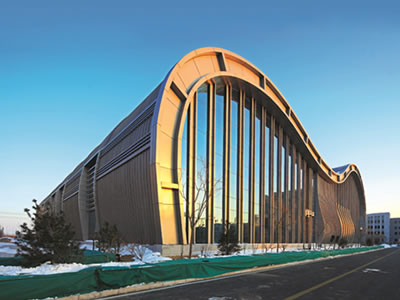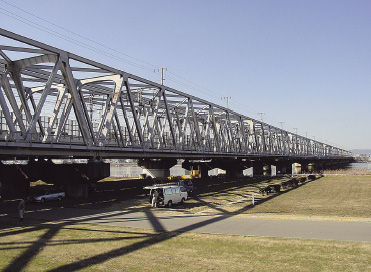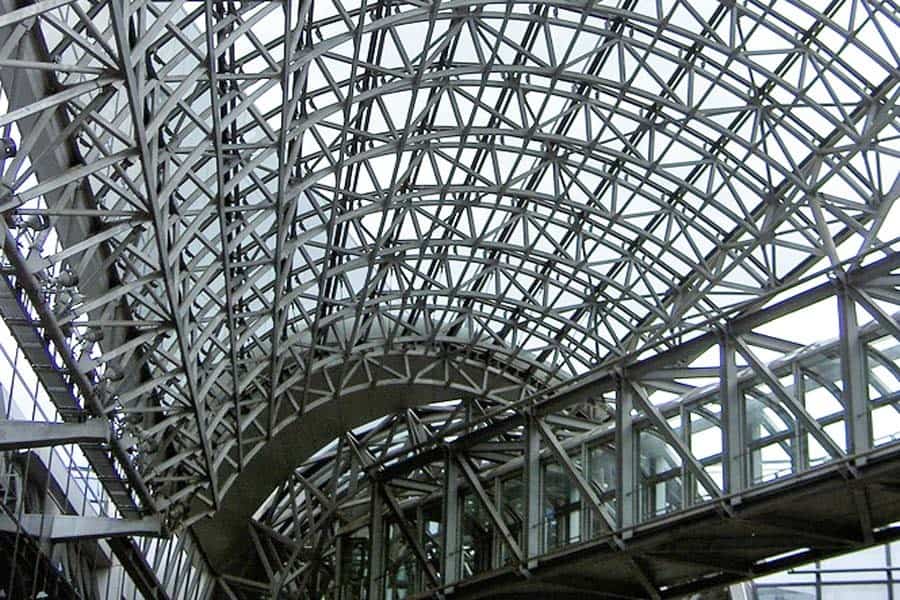Steel Structures
Courses > Structural Steel Design > General Topics of Steel Material and Design > Steel Structures Introduction
Introduction
Structural steel is one of the materials which used for any kind steel construction, it is formed with a specific shape. These steel materials are of certain standards of chemical composition and proper strength. The steel materials are also defined as hot rolled products, having cross sections like angles, channels and beam. All across the world, there is an increasing demand for steel structures.
There is a big advantage of steel over the concrete in terms of its ability to bear better tension as well as the compression which resulted in lighter construction. The steel authority of particular country takes care of the availability of structural steel for construction projects.
There are various structures which come under the edges of steel structures. These structures may be used for the industrial, residential, office and commercial purposes. The purpose of bridge is for roadways and railway lines. The structures like towers are used for different purposes such as power transmission, nodal towers for mobile network, radar, telephone relay towers, etc.

 Concepts and Formulas
Concepts and Formulas
Steel structures can be classified as follows:
- Frame building
- Plate girder
- Steel arch bridge
- Industrial building
- Transmission line towers
Advantages and disadvantages of steel structures:
In general, the advantages of steel structures are as follows:
- Steel has a high strength to weight ratio. Therefore the dead weight of steel structures is relatively small. This property makes steel a very attractive structural material for some multi-storey building, long-span bridges, etc.
- It can undergo the plastic deformation before failure; this provides greater reserve strength. This property is called as ductility.
- Properties of steel can be predicted with a very high degree of certainty. In fact, steel shows elastic behavior up to a relatively high and usually well-defined stress level.
- Steel structures can be built with the high-quality relationship and narrow tolerances.
- Prefabrication and mass production is usually possible in steel structures.
- The rapid construction is possible in the steel structures. This results in economic construction of steel structures.
- The good fatigue strength is also the advantage of steel structure.
- If necessary, the steel structures can be strengthened any time in future.
- The reused capability of steel construction is also the advantage.
While in general, the disadvantages of steel structures are as follows:
- Steel structures are more costly than other types of structures.
- The strength of steel is reduced considerably when heated at temperatures commonly observed in fire; therefore the treatment of fireproof is needed.
- The steel structures when exposed to air and water as in the case of bridges, there is a big possibility of corrosion and it needs regular maintenance.

Properties of steel
Steel is an alloy of iron and carbon. The special properties can be imparted to iron by adding a small percentage of manganese, sulfur, copper, phosphorous, chrome and nickel, therefore variety of steel can be produced. Generally, the effects of different chemical constituents on steel are as follows:
-
Increase contents of carbon and manganese will induce the properties such as higher tensile strength and yield strength but have lower ductility and it is more difficult to weld.
- If the contents of sulfur and phosphorous increased beyond percentage then it induces brittleness and therefore it affects the ability to weld as well as fatigue strength.
- The contents of chrome and nickel will induce the corrosion resistance property in the steel, the resistance to high temperature can be improved too.
- The resistance to corrosion can be improved by adding the copper.
The slight changes in the chemical composition will result in the various types of steel. This type of steel is used as structural members like tubes, sheets, pipes, bolts, rivets, reinforcement bars, etc.
The heat treatment and alloys used in the production of steel results in different properties and strength. The mechanical properties of structural steel are as follows:
- Tensile strength:
The stress-strain curve for the steel is generally obtained by conducting tensile test on any standard steel specimen. Tensile strength of the steel can be defined in terms of yield strength and ultimate strength.
- Hardness:
Hardness is regarded as the resistance of any material to identification and scratching. This is generally determined by forcing an indenter on to the surface. The resultant deformation steel is both elastic and plastic. The different methods to find out the hardness of metal which includes Brinell hardness test, Vicker’s hardness test, and Rockwell hardness test.
- Notch Toughness:
There is the possibility of microscopic cracks in a material or the material may develop such cracks as a result of several cycles of loading. These cracks may result in sudden collapse of the structure and it is very dangerous. Therefore to ensure that this should not happen, materials in which the cracks grow slowly are preferred. These types of steel are known as notch-tough steels and the amount of energy it absorb is measure by impacting the notch specimen.
- Fatigue strength:
A component of structure, which is designed to carry a single monotonically static load, may fail if the same load is applied cyclically a large number of times. If the example of a thin rod is considered, it bent back and forth beyond yielding fails after few cycles of such repeated bending. This type of failure is termed as fatigue failure. Examples: bridges, cranes, offshore structure, slender tower, etc.
- Corrosion resistance:
Corrosion is the procedure in which oxidation of a metal in a normal atmospheric condition owing to the excessive presence of moisture and oxygen in the air. Corrosion of the metal is a very natural and rapid phenomenon in the areas of high humidity and places closer to saline water. Therefore the efforts to be made to control the corrosion by using galvanize and epoxy coated reinforcement bars but failed in practical usage due to the risk of disbanding, causing accelerated corrosion. Corrosion resistance elements such as copper, phosphorus and chromium are added in appropriate measure to the metal which results in corrosion resistance steel.

Rolled steel sections
Like concrete, steel sections of any shape and size cannot be cast on site, since steel needs very high temperature to melt it and roll into the required shape, steel section of standard shapes, sizes and lengths are rolled in steel mills and marketed.
The rolled steel sections consist of rolled beams, columns, channels, rectangular hollow sections, circular hollow section, single angle, tees, double angles and built up sections.
 Watch Videos
Watch Videos
 Solved sample problems
Solved sample problems
 Download Files
Download Files
 Read also
Read also
- Determinants of tensile stress of the concrete
- How could artificial intelligence help in optimization of steel at construction site?
- historic perspective of special moment frames
- SRPC (cement), chemical composition, pros and cons of SRPC.
- Artificial Intelligence in Construction 3D printing
 Share
Share
Follow our official Facebook page (@civilengineeringbible) and Twitter page (@CivilEngBible) and do not miss the best civil engineering tools and articles!

